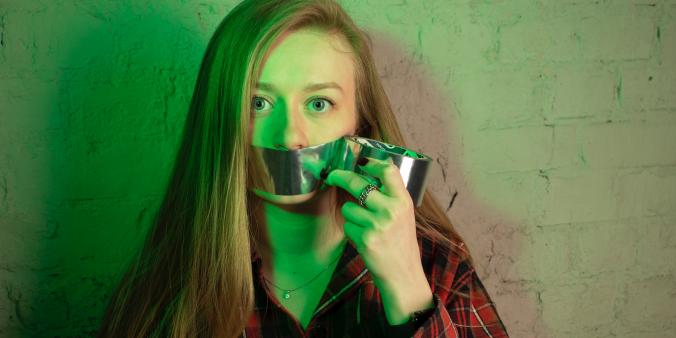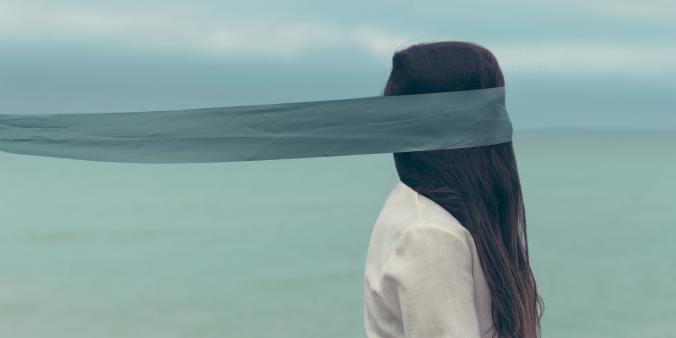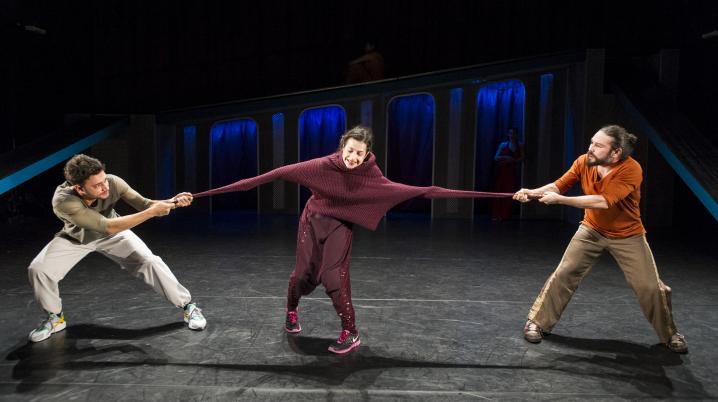
How to stretch the limits of artistic freedom without transgressing them: four international cases explained
By Errol Boon
On Monday April 15, DutchCulture and the Performing Arts Fund NL organised Artistiek Kompas – over je principes als (podium)kunstenaar in het buitenland, a symposium on artistic freedom and censorship. After an inspiring keynote lecture by Consul General in St Petersburg Lionel Veer, ending with Dostoyevsky’s optimistic words that ‘beauty shall save the world’, the visitors were divided into smaller groups to discuss and dissect a specific case concerning the limits of artistic freedom.
In two rounds, the audience was provided the possibility to attend presentations by Harmen van Twillert (Dries Verhoeven), Miranda Lakerveld (World Opera Lab), Roeland Dekkers (BonteHond) or Manuel Segond von Banchet (Danstheater Aya). Henriëtte Post (director of the Performing Arts Fund NL) concluded the afternoon with the words: ‘You do not have to go beyond the limits in order to stretch the limits’. I visited the cases and wondered how these artists were able to stretch the limits of artistic freedom without transgressing them.
Case 1: Dries Verhoeven – Wanna play? in Berlin / Ceci n’est pas…in Helsinki. Presented by Harmen van Twillert)
Dries Verhoeven is a theatre maker and visual artist who creates installations and performances in the public space, that address social issues and directly involve the spectator. Former marketing manager of Dries Verhoeven, Harmen van Twillert, brought up two performances that were forced to be adapted in Western European countries: Ceci n’est pas... and Wanna Play? The central question in both cases: how do you communicate the values of your work when they are interpreted differently by the audience?
Ceci n’est pas… contains of a number of tableaux vivants, exposed in a glass box in the public space, that confront passers-by with controversial, discomforting images that are normally not seen in the public spaces. Although the work did not cause any tumult during its premiere at Spring Festival Utrecht, it created a lot of commotion in other European countries. One of the images, called Ceci n’est pas mon corps - portraying a naked, old woman wearing the mask of a young girl, was eventually prohibited by the state of Finland. The team of Dries Verhoeven found itself confronted with a difficult dilemma: either adapt the piece by giving the woman underwear, or not show the piece at all. Verhoeven chose the first option, but added a text to the glass box in which he makes mention of the censorship of the Finnish government. Thus, Verhoeven employed the censorship to provoke a discussion on the paternalism of Finnish state.
In Wanna Play? Love in times of Grindr Verhoeven lives in a glass house for ten days in the middle of a public square. From within this glass house, Verhoeven chats with users of the dating apps Grindr and Tinder and ask them to visit him in the glass house to satisfy his non-sexual desires (e.g. playing chess, cooking together, holding hands). Although the meetings in the glass box took place behind a veil, the chat discussions were live projected on the glass house, so that everybody around the square could follow the chats. In the Berlin neighbourhood Kreuzberg, the work caused a lot of outrage, even violently so, with regard to the privacy of the participants. After five days Verhoeven was forced to quit the project. When Verhoeven re-staged the performance in Utrecht, he chose to adapt the piece: the participating dating app users were now asked for consent before the chat was projected on the glass house. The reason for Verhoeven to adapt his work, Van Twillert explains, is that the discussions on privacy overshadowed the topic that Verhoeven actually wanted to address with the work, namely that of the influence of smartphones on intimacy.
Interestingly, both cases of Verhoeven result in the same conclusion, in which the artwork ends up – adapted – making an opposite argument to the one initially intended. In Ceci n’est pas mon corps... the modification was employed to raise a new discussion on state paternalism, which was not initially provoked by the original work. Wanna play? on the other hand, was tweaked in order to hold on to the discussion that the original work did initially sought to provoke. So in the first case adaptation was motivated by stimulating new discussions, in the second case by preventing new discussions from happening. Probably this has to do with the close relationship between the initial and the new issue raised by Ceci n’est pas... (i.e. limits of public space and paternalism of the state), which was less close in the case of Wanna play? (i.e. digital intimacy and privacy). The moral of the story seems to be that there isn’t a clear-cut rule or criterion to make these difficult decisions on. Rather, acknowledging the fact that the autonomy of a work of art is always embedded in a socio-cultural context and that the discussions raised by the work are never fully controlled by its maker, implies that every audience requires a different anticipation and every addressed topic a new assessment.
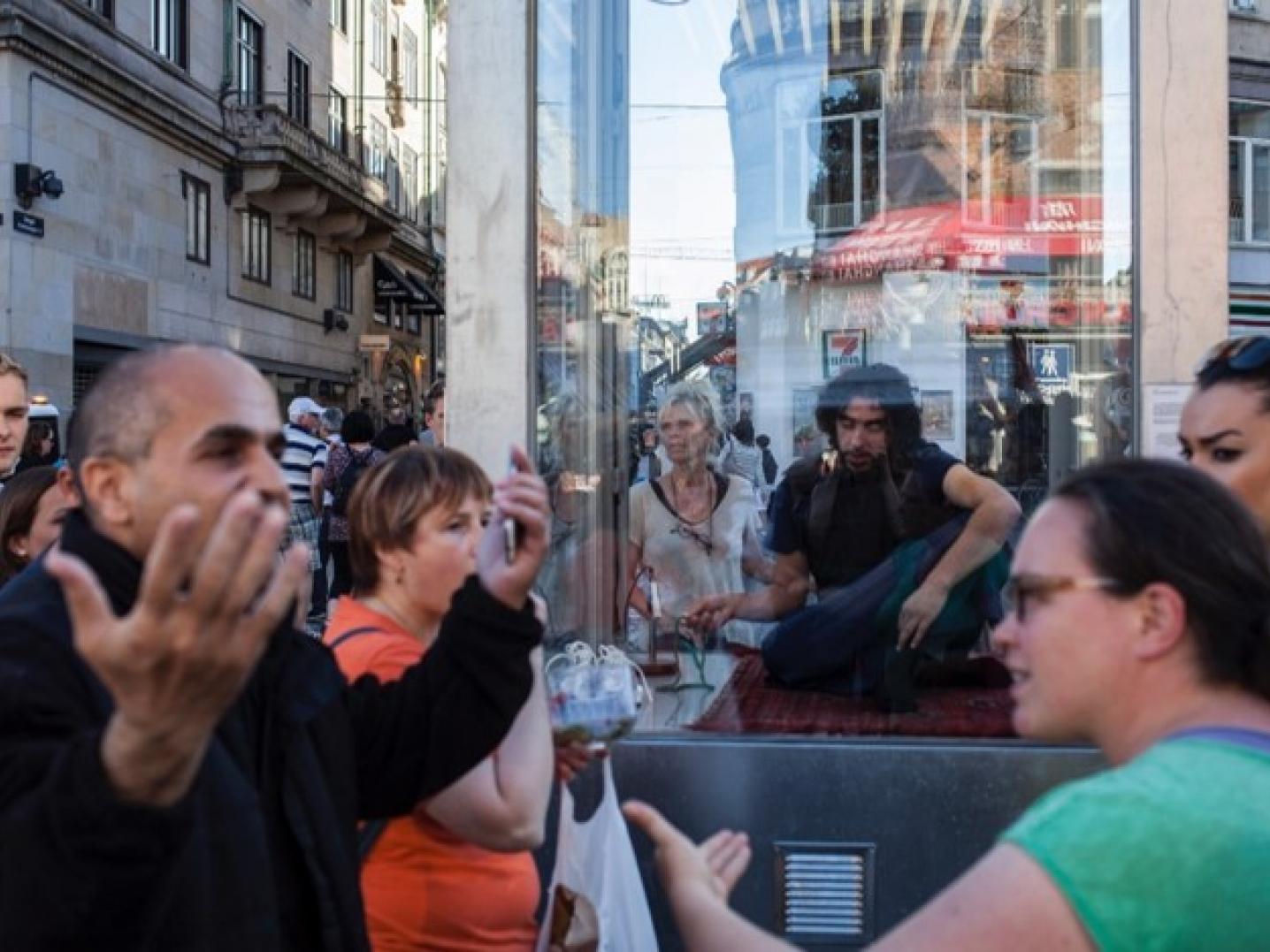
Case 2: BonteHond - Gezocht konijn (directed by René Geerlings), in coproduction with ATTA Festival Istanbul. Presented by Roeland Dekkers
With Gezocht: Konijn theatre collective BonteHond created a ‘police detective for pre-schoolers’, in which a naughty rabbit is wanted by the police for disturbing the public order with carrots and droppings. Festival ATTA Istanbul recognised the artistic stratification of the piece and invited BonteHond to remake the piece with Turkish actors. Dikkat: Tavşan Aranıyor became very successful and is currently touring six cities in Turkey.
The process of a Turkish remake of Gezocht: Konijn did not only involve a translation of the original text from Dutch to Turkish, but also required other adjustments. Interestingly, most of these adaptations are not made with regard to a censoring state, but rather with regard to a different cultural audience. When, for example, the actors asked Dutch children ‘who is ever caught by the police’, they all roared with laughter. However, for an audience of Turkish children, such a joke would provoke anxiety rather than laughter. When the policeman gives a salute with a flat hand on his head, a Turkish audience would directly link this with militarism, which has a very different meaning in Turkey than in the Netherlands.
Crucial for BonteHond was that ATTA festival recognized the encoded meaning and critical potential of the play: the play is all about rebellion and stimulates the children to reflect on the question: who is more powerful, the police or the rabbit? In this sense, the work can be read as a story about the dialectics of rebellion. The customizations to the work that BonteHond made need to be seen in that perspective: they concern dramaturgical considerations of choosing the right symbols that convey this double meaning and critical potential to an audience with a different cultural background. In the case of BonteHond, the adaptions can be read as the answers to the question of which symbols needed to be employed so that the Turkish audience decodes the same significance as the Dutch audience did. Adaption as dramaturgy.
Interestingly, Roeland Dekkers explained that despite some symbols that had to be changed, he was surprised by the universal effect of humour: ‘It is only a matter of finding the right codes and symbols.’ Hence, the practice of remaking a piece in another country has a deeper significance and value than mere prestige. Transferring your work abroad is a two-folded dramaturgic challenge: on the one hand, it is about distinguishing the fundamental meaning at stake from its encoding and, on the other hand, it concerns translating this meaning to another culture without eroding it.
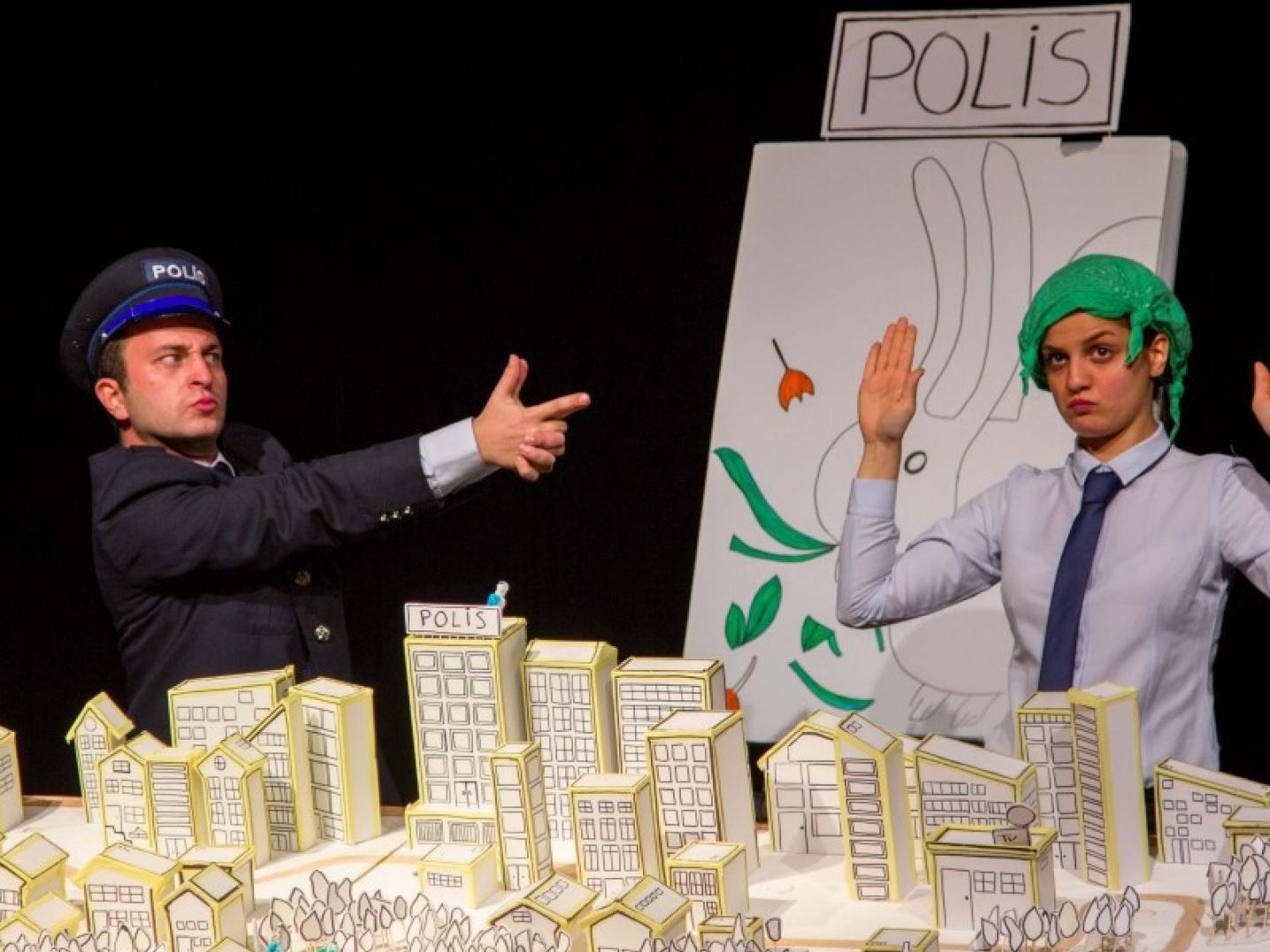
Case 3: Danstheater Aya - Sluier (directed by Wies Bloemen) in Indonesia. Presented by Manuel Segond von Banchet
Sluier (Veil in English) is a dance performance for a young audience about a young Muslim woman that struggles with negotiating her double cultural background (Dutch-Moroccan). A cast of Dutch-Moroccan actors vulnerably tell their personal stories. With literal citations of the Koran they critically yet respectfully investigate the role of women in the Koran without abandoning Islam. Hence, Sluier is all about the personal quest of making a religion your own.
The embassy of the Netherlands in Indonesia saw that the questions concerning double cultural identity that Sluier addresses carry relevance in Indonesia too, so they asked Aya to perform the play in Jakarta. However, the embassy was also concerned about accusations of blasphemy the work might have had provoked in the local context. For how do you bring a performance to a young public in a country in which Islamist parties play an increasingly prominent role in society? Furthermore, as opposed to the Dutch context, Indonesia does not have an educational system that pays much attention to theatre visits, a factor that significantly affects the interpretation of the play at the audience level.
Since Sluier is not about blasphemy, but rather about personally and liberally interpreting a religion, Aya decided to collaborate with the embassy and follow their advice to skip the Koran citations and adapt certain scenes about the burgeoning female sexuality. Manuel Segond von Banchet thereby decided to take a modest position within the process and left the artistic decisions to the makers of the piece. Interestingly, when the piece was performed in English and live translated in Indonesian, the audience that knew English could very well recognise the differences between the English text and the expurgated translation of the government. Thus comparable to the case of Dries Verhoeven, Aya made the translator’s censorship visible and open, without criticizing it, leaving the assessment open to the audience.
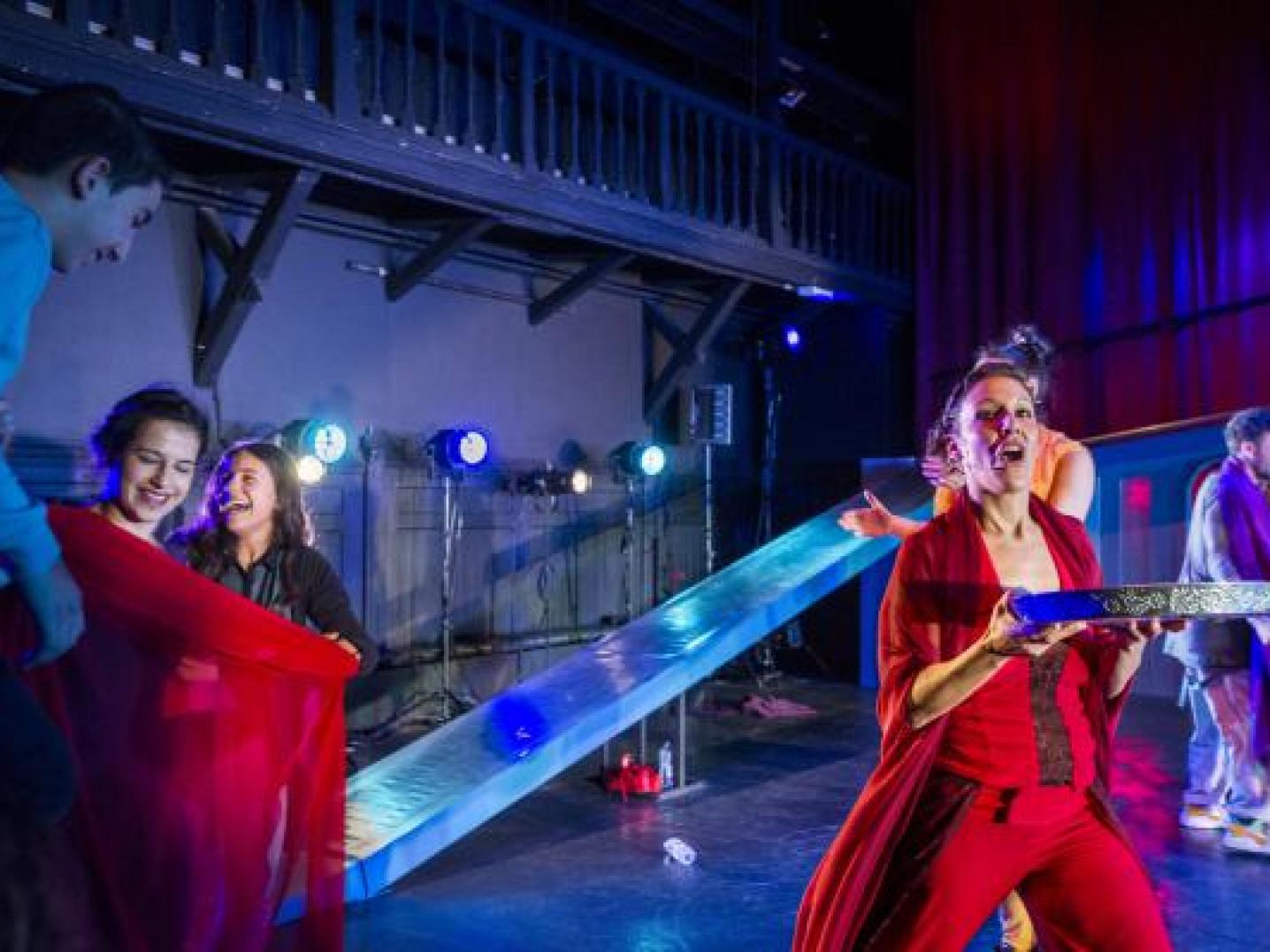
Case 4: World Opera Lab - Turan Dokht in Iran. Presented by director Miranda Lakerveld)
Miranda Lakerveld grew up in Lombok in Utrecht, a multicultural working-class neighbourhood. ‘However, when I premiered my first opera, I didn’t find any of my former neighbours at the opera house.’ Her wish for a more diverse and inclusive audience motivated Lakerveld to focus on intercultural, non-western opera’s. In her last production, Turan Dokht (Turan’s Daughter), Lakerveld and composer Aftab Darvishi wanted to bring Puccini’s Turandot ‘back to its Persian native soil’. After a tremendously difficult production process, hindered by both economic problems and increasing diplomatic tensions, the opera had its premiere in Teheran February 2019 with a cast of both Iranian and Dutch artists.
The artistic restrictions that Lakerveld faced in Iran involved the fact that women were performing on stage. However, initially, this did not necessarily hamper the aesthetic value of the piece. On the contrary, the limitations often resulted in creative solutions that turned out to be unexpectedly interesting. Not only did the dress codes lead to beautiful costumes, but also the prohibition of women singing solely on stage led to polyphonic arias, in which the solo voice was intricately and innovatively embedded in a small chorus – first submerging into the other voices, then suddenly gloriously prevailing them. Furthermore, the injunction of man and woman touching each other on stage resulted in stunning scenes testifying a physically modest, yet perhaps mentally even stronger intimacy between the two dramatis personae – somehow the absence of physical touch made the scenes even more touching. Indeed, one could argue that (artistic) freedom especially flourishes by virtue of its limitations.
These restrictions were all artistically legitimate, according to Lakerveld. Even though by the time the censorship committee visited the final rehearsal Turan Dokht was considered de jure correct according to the rules of Iranian government, Lakerveld’s team realised that they couldn’t run the risk of getting rejected and decided to take an extra security measure; they agreed to let the leading actor (Arash Roozbehi) sing along with the leading actress (Sayeh Sodefiye) during the female arias – ‘a decision that hurt’, Lakerveld says. However, after the piece was permitted by the committee, at the start of one of the female aria’s during the premiere, Arash Roozbehi forgot to sing along with Sayeh Sodefiye, Lakerveld tells. Suddenly she was singing alone.
This example is not only touching, but also interesting if one would set up the following speculative hypothesis. Like Iranian women sometimes wear their headscarf only partially, excusing themselves by saying that it ’accidentally fell off’, it could perhaps be that the Arash Roozbehi ’forgot’ to sing along in order fulfil the deep wish of his fellow actress to, for once in her lifetime, sing solely on a stage in her motherland. Speculatively, one could hypothesise: he forgot it on her behalf. Seen like this, the forgetfulness of the actor becomes a highly poetic form of resistance, a performative form of beauty that would rarely occur in the West.
Interestingly Lakerveld’s case testifies two forms of adaptation: on the one hand artistically productive adjustments, which lead to interesting intercultural collaboration and artistically beautiful solutions, and on the other hand painful ones. Even in the case of the latter, Lakerveld did not find it her prerogative to be recalcitrant, to resist the cultural values of Iran and impose her Western ideas. Although it was painful and constraining, she remained humble. But by stepping aside, she created space for the Iranian actors to resist the adaptation in their own way.

Autonomous adaption & anticipating the unexpected
Despite all their different projects in divergent corners of the world, all four cases testify to a similar sense of urgency to stage a performance that somehow challenges certain limits of a foreign cultural context - be it limits of blasphemy (Aya), privacy and paternalism (Verhoeven), women’s freedom of expression (Lakerveld) or of a different understanding of the state’s institutes (BonteHond). All artists chose to perform their work in an adapted form rather than not performing at all. For when you are full of a passion and urgency of conveying a certain message that has to be told - not also but especially in culturally different contexts – ‘not going’ is hardly an option at all. Interestingly, we see that cultural workers need to artistically legitimise this adaptation in order to stand in an autonomous relation to their adapted artworks. That is; when you do not encounter an adaptation of your work as somehow forced upon you by an external instance, but, on the contrary, find a reason or motivation for the adaptation that resonates your own artistic ambition, the adaptation could be an autonomous, sovereign choice. The decision to adapt your work then appears to be your own decision and the work remains your work.
This artistic legitimisation cannot rely on a clear-cut, universally applicable criterion, but must be sought for over and over again. Decisive in all these cases is the fundamental meaning, or the message, that the artists want to convey with their work, to a certain extent distinguished from the encoding of this message. If a different cultural context requires an alternative encoding of this meaning, an adaptation seems to be legitimate to the extent that it serves this meaning. Therefore, the crucial questions become: what is really at stake for me? What do I want to convey? What do I want to do with my work? Hence adaption involves a certain dramaturgical challenge and an artistic task: distinguishing a universal meaning from a cultural-specific encoding and trying to re-code the message to another context. What’s more, other interesting examples show that it can be even helpful to actively employ the censorship of the work, in order to enforce or enrich the very questions or meaning the work wants to provoke.
If we are to consider all the discussed cases as examples of critical artworks, we need to conceive their critical potential as forms of immanent critique, that is: striving for certain values from within the system, rather than imposing ideals from outside a culture. Indeed, in other words: stretching the limits without transgressing them. Operating from within the system implies a more modest or remote attitude, which acknowledges that different cultures have their own forms of resistance with vocabulary and mechanisms that a European artist might not even know about. Not imposing your ideals, but reserving space for these forms of resistance is often more productive in realising a critical potential. Reserving space for criticism means that you anticipate the unexpected, thereby acknowledging that to a certain extent, despite all universal similarities, you remain an outsider that cannot foresee all complexities present in a foreign culture. Hence ‘stretching the limits without transgressing them’ means anticipating the unexpectedness that often drives us to go abroad but is all too often forgotten upon arrival. All in all, working internationally, especially for artists and cultural workers, remains an unpredictable endeavour, and within this uncertainty lies its promise.
